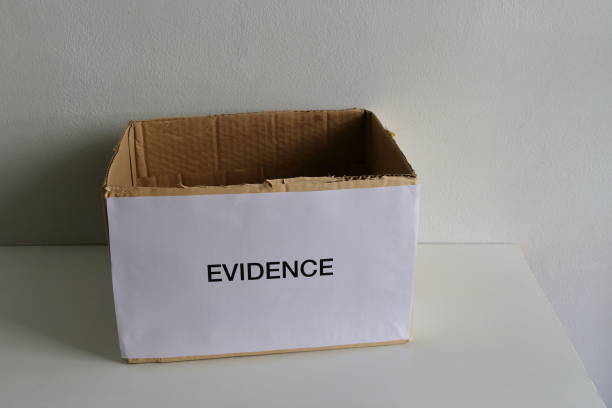
By Karen Piso Nadeau, Esquire
Issues Addressed:
- What is Spoliation of Evidence in Massachusetts?
- What can be Done to Protect injured Victims in an Accident when Evidence Disappears?
A recent case decision involving a train’s fatal collision with a pedestrian addresses a familiar scenario in personal injury cases. According to Amtrak, despite the train having a video camera to record the crash, there was no video of the accident and essentially a blank screen. This scenario is unfortunately all too common in our Cambridge, Massachusetts personal injury practice-whether it be a trip and fall accident at a store or slip and fall in a parking lot or motor vehicle crash involving a passenger, a pedestrian, or a bicyclist injured. When evidence of the accident disappears in Massachusetts, it is often very convenient for the negligent party who usually controls the evidence needed by the injured victim, usually a video showing the accident occurring or the dangerous condition that caused the accident.
When video evidence disappears, the injured party -who has the burden of proof to show that the individual or entity is at fault and responsible (negligent) for the harm inflicted in order to recover compensation- needs to look at other evidence and means to prove their case to ultimately get the money deserved from the insurance company that insures the negligent party. This is not usually easy and takes a lot of manpower, skill, and execution. Simply put, when evidence conveniently disappears, it is almost always to the advantage of the negligent party who hurt someone.
This blog will explain spoliation of evidence and explore a recent train fatality case and what can be done to “even the playing field” for our clients, the injured parties harmed at the hands of someone else.
What Is Spoliation of Evidence in Massachusetts?
Spoliation is defined as the action of ruining or destroying something. Evidence is defined as the available body of facts or information indicating a belief or proposition is true or valid. As an injured party seeking to recover money for the harm caused by another, the injured person needs evidence consisting of facts and information to show that the damage was due to the wrongful acts of another. For example, if it is a car accident, the victim needs to prove that the other driver ran the red light or failed to stop at the stop sign. If it is a trip and fall, the victim must show that the property owner, for example, failed to repair or correct a dangerous condition such as broken steps, ripped carpet, an uneven surface, or other defect. When there is spoliation of evidence, available facts or information is ruined or destroyed. In a nutshell, evidence has disappeared.
In Massachusetts, a judge has the discretion to impose sanctions for the spoliation or destruction of evidence, whether negligent or intentional, in the underlying action in which the evidence would have been offered. See Mass. Guide Evidence 1102. Sanctions are, in simplest terms, penalties imposed on the party that ruined or destroyed the evidence.
In our personal injury practice at Nadeau Harkavy LLC, we see two ways that evidence disappears. First, we see the blank videos like the recent train fatality case. We had a case involving a private bus company involved in an accident admitting that they require video recording of the bus as it traveled. However, on the day of the accident, the video did not function-how convenient-when a bus full of passengers traveled off a highway down a grassy embankment and landed in swamp land off the highway. Another example is a parking lot trip and fall where the property owner admits there is video surveillance of the parking lot, but the video did not work the day of the accident, or the video was broken, or the video was taped over. We hear many excuses for the lack of video evidence.
The second type of evidence lost is what I describe as “tampering with evidence”. This involves changing the way things look and changing the way the scene of the accident was at the time of injury. When a victim trips over a steel rod in a parking garage or a ripped carpet in a store or an uneven surface while shopping, the injured party is typically in shock and often in pain. Many clients describe feeling embarrassed by the attention on them and a desire to just get home. The idea that someone may change the scene of the accident or destroy evidence is the furthest thing from the victim’s mind. They are bleeding, in agony, have broken bones, and can’t possibly think about preserving evidence. The problem is the scene may never look the same again, and evidence of a defective condition or unsafe area may disappear.
We have cases where after we give notice of a claim to the responsible party or business with a specific demand that they preserve evidence, the negligent parties tamper with the evidence and change the scene of the accident so that the defect or dangerous condition is removed and sometimes destroyed or otherwise trashed. It has happened too many times. Without evidence of the defect or unsafe condition, a victim may lose their rights to recover money to make them whole.
So, what can be Done to Protect the Injured Victim When Evidence is Lost in a Massachusetts personal injury case?
As a personal injury attorney representing the injured party, one of the first things we consider is the preservation of evidence. Photographs of the accident scene, the unsafe condition or defect are some of the most powerful evidence to use in a personal injury case. Video surveillance of the accident or objects or things that caused our clients harm are also very compelling to prove the case against the negligent party. A picture or video speaks a thousand words. Sometimes, clients have photographs or video. Other times, attorneys representing victims can secure it by going to the scene or through an investigation. Usually, the sooner the better. The closer in time to the accident, the more likely things are the way they were when the accident occurred.
Additionally, as an attorney representing the injured party, a demand is made to the responsible party and to their insurer to take the necessary steps to preserve evidence and to make it available to the victim’s counsel for inspection. Another tool available to an injured party is to request an inspection of the premises where the accident occurred, sometimes with an expert such as an engineer or accident reconstructionist to take measurements and secure photographs and video to preserve evidence, and the expert provides an opinion as to the cause of the accident. Spoliation of evidence is often discovered in response to the injured victim’s request by their counsel for the evidence, for video surveillance or the actual dangerous condition on the property. The negligent party, business owner, landlord, or other entity responsible, when pressed about the evidence, often replies as follows:
-There are no photographs or video surveillance
-The video was not recording
-The video did not capture the accident
-The video does not work
-The video was taped over
-The video is blank
-They have no knowledge of the changes to the dangerous condition on their property so that the defect is no longer present, despite being responsible for the area where the accident occurred.
-They claim the injured party was not on their property or they have no knowledge of the accident or dangerous condition on their premises.
They play stupid and innocent and ignorant. In one case, after insisting our client was not on their property, we produced an ambulance report showing our client was taken from the property by ambulance to a hospital with broken bones. In another case, where they claimed our client was not at their business, we produced a receipt from our client’s purchase at their store. In another case where they again insisted our client was never at their place of business, our client found a get-well card from one of the sales people that sold him a car.
The scene of the accident is sometimes changed, sometimes innocently and other times intentionally, to remove the dangerous condition as if it never existed. Without photographs or video, it is challenging to prove the defective condition that no longer exists. The disappearance of evidence is a major hurdle to an injured party and his family seeking compensation for damages caused by the negligence of another.
There are some safeguards in place to assist the injured party in their case against the negligent party who claims the video was not working or who removed the defect and changed the accident scene knowing there was a potential personal injury claim against them.
The recent Massachusetts case of Sanchez v. National Passenger Railroad Corp. (United States District Court of Massachusetts decided June 14, 2021) addresses the spoliation of evidence and some of the remedies the courts will consider in cases where evidence disappears. The case involves the plaintiff Sanchez and her grandmother Figueroa crossing the railroad tracks in downtown Springfield, MA. A train struck the pedestrians resulting in the death of Figueroa and Sanchez was injured. Sanchez filed a lawsuit against Amtrak for negligence in federal court as administrator of her grandmother’s estate and on her own behalf.
The plaintiffs’ attorney sent notice to Amtrak of his representation less than a month after the tragic accident and at the same time requested investigative reports including the black box data, photographs, and videotapes. Amtrak responded by stating that their trains had cameras and the train’s event recorder was downloaded but did not mention any problem with the video. Then, months later Amtrak claimed it had no video of the accident. Witnesses from Amtrak including their electrician and foreman testified that the LDVR (Locomotive Digital Video Recorder) was working but the screen was blank, and they could not access the black box information.
A lead claims representative for Amtrak who was responsible for resolving claims testified that he did not normally consider video of a passenger strike as helpful to his understanding of events. He did not investigate whether he was able to view the video despite having possession of it.
The plaintiff’s counsel requested a finding of spoliation and sanctions, requesting either an adverse inference jury instruction or an order from the court barring Amtrak from arguing comparative negligence. The jury instruction for adverse inference would involve a judge instructing the jury that they may find the lost evidence would not be helpful to Amtrak since the video evidence is lost. Barring Amtrak from arguing comparative negligence would mean Amtrak would be forbidden from arguing that the victims Figueroa or Sanchez were in any way at fault for the accident.
The federal court judge found that Rule 37(e) of the Federal Rules of Civil Procedure governed the situation. Under Federal Rule of Civil Procedure 37(e), a district court may sanction a party for failing to preserve “electronically stored information that should have been preserved in the anticipation or conduct of litigation.” See Fed. R. Civ. P. 37(e). Judge Mastroianni found Amtrak violated the rule by failing to preserve the black box information in anticipation of litigation. However, Amtrak did not do this intentionally. There was apparently no evidence of intentional misconduct by Amtrak, although an injured party usually has no way to really know how the evidence disappeared and if it was deliberately deleted or buried.
The judge found that at most Amtrak was grossly negligent in preserving the black box after a fatal collision. To have an adverse inference instruction or order prohibiting Amtrak from arguing comparative negligence, Amtrak would have to intentionally destroy the evidence. The court stated that any sanction should be “no greater than necessary to cure the prejudice”. The court held that Amtrak failed to take reasonable steps to record and preserve video the day of the collision and this is a Rule 37(e) violation. The court would address an appropriate sanction closer to the trial date in the form of a jury instruction. See Sanchez v. National Passenger Railroad Corp.
The court rejected Amtrak’s argument that because the train’s LDVR failed to record any video on the day of the fatal collision, Amtrak had no obligation regarding preservation or retrieval of the data. The court held that preservation included taking reasonable steps to ensure that a video camera is recording. “Amtrak’s failure to record or to preserve the recorded video is equivalent to the loss of evidence under Rule 37(e).” The court considered the fact that Amtrak committed to having outward-facing cameras on its trains. Also, Amtrak “had protocols and processes in place for inspecting, downloading and trouble-shooting…” The court found that Amtrak “did little to ensure that its outward-facing cameras were actually recording. ” The court stated that such minimal efforts by Amtrak “amount to window dressing”.
The court considered the fact that Amtrak was on notice almost immediately following the collision that the plaintiffs considered Amtrak responsible for the collision and the death of Figueroa. The court also focused on the conduct of the claims representative who did not contact any technical support to access the video and did not consider the video important evidence when he investigated a claim involving a pedestrian fatality, “even when witness accounts diverged”. The conduct and testimony by Amtrak employees and the claims representative are the typical games that we see the negligent parties and their insurers playing to avoid liability and ultimately deny a deserving victim and their family the compensation they deserve. I can’t tell you how many depositions I have walked out of the conference room and said the words: “another wild goose chase; liars; game players”.
The lesson learned from this recent case is that the courts are not buying the flimsy reasons for the disappearance of video evidence given by the parties who caused harm to the victims. Responsible parties who harm someone need to take reasonable steps to secure evidence and have procedures in place for such evidence when they anticipate a claim against them by the victim they harmed. The courts are not going to tolerate the disappearance of evidence needed by a plaintiff when the defendant has control of it and the evidence is lost. There will be consequences for the parties that harm someone if they choose to play games with evidence and send a victim on a wild goose chase. The threat of sanctions for lost evidence will hopefully have the insurance companies, their claims representatives, and the individuals and entities that they insure who caused harm to an innocent victim, think twice before claiming a tape is blank or that video evidence is not important in deciding who is at fault for an accident as an excuse for mishandling video evidence.
Unlike a decade or two decades ago when video cameras and surveillance were not widely used and were the exception, our world today has cameras everywhere from our homes to the streets, to stores, restaurants, businesses, and parking lots. Cameras are part of our everyday lives, and they are rolling everywhere. With the increasing use of video cameras comes an increase responsibility to preserve and protect video evidence or suffer the consequences if such evidence is lost or disappears.
When someone is injured in a motor vehicle accident, slip and fall, or through any other accident, a thorough investigation of the accident events is necessary to determine the cause of the accident and secure important information. As a victim of an accident, make sure everything is done to protect your interests. The lawyers at Nadeau Harkavy LLC help victims and their families recover compensation in serious injury and wrongful death cases arising from car crashes, trip and falls and other accidents. If you have any questions about your legal rights relating to a car accident, wrongful death, or other accident, feel free to contact us for a free consult today at 617-674-7640.
Meet The Lawyers
With 60 years of combined experience serving injured victims in Massachusetts, our team has collaborated for nearly two decades, delivering a proven track record of outstanding results for clients. Guided by a philosophy of treating clients as we would our own family, we strive to ease our clients' journey from the initial phone call to case resolution. Committed to competing and fighting vigorously, we aim to hold insurance companies accountable to the fullest extent of the law. Our belief in close communication ensures the best possible outcomes, and our approachability makes us readily available to you. Entrust us with your case, allowing you to focus on your physical, emotional, and financial recovery.
Massachusetts Personal Injury Lawyers
Massachusetts Personal Injury Lawyers with over 60 Years Combined Experience Representing Those Injured in Accidents.













